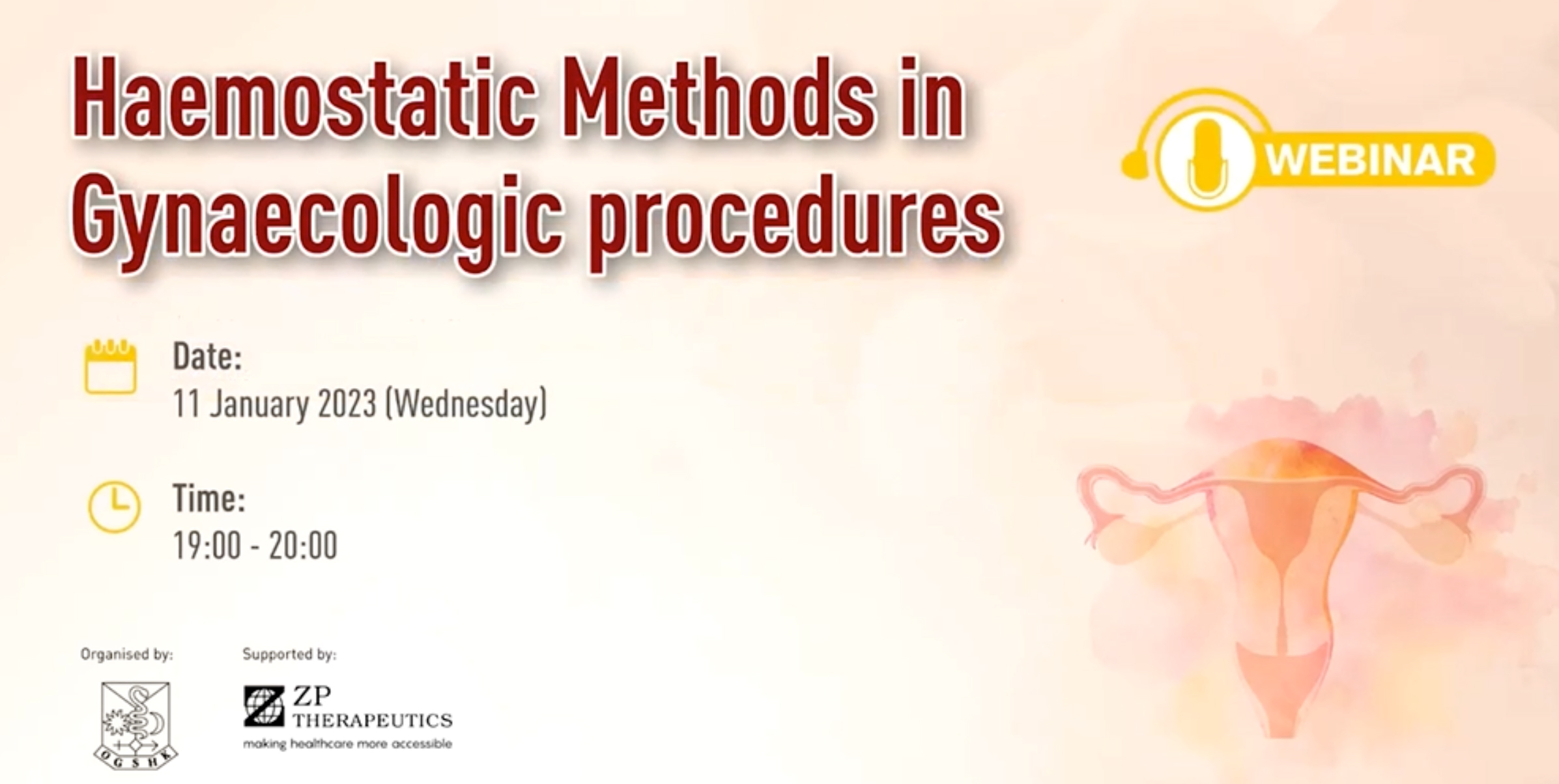
Given the complex anatomical structure of the pelvis, gynaecologic surgeries are susceptible for perioperative bleeding, whereas massive bleeding can be life-threatening unless resuscitation is accomplished promptly. Preoperative evaluation of the patient can aid surgical planning to help prevent intraoperative haemorrhage or prepare for the management of haemorrhage.
On 11-Jan 2023, an online symposium titled “Haemostatic Methods in Gynaecologic Procedures” organised by The Obstetrical and Gynaecological Society of Hong Kong was successfully held. In the symposium, Dr. Santiago Domingo of the La Fe Hospital, Spain, shared his experience and opinions on haemostatic methods in gynaecologic surgical procedures.
Dr. Domingo addressed that sharpening the surgical skills of surgeons is crucial in reducing the risk of perioperative bleeding. Nonetheless, solely comprehensive training is not enough to minimise the risk of complications in surgeries. Preparing the patients for surgery and the teamwork among healthcare professionals, particularly anaesthetists and nurses, are crucial. Additionally, Dr. Domingo highlighted the clinical significance of innovative instruments in optimising surgical outcomes. In particular, Dr. Domingo outlined various types of secondary haemostatic agents. Remarkably, an innovative fibrin-coated collagen sealant (FCCS) for controlling perioperative bleeding and leakage of fluids by means of bioactive coagulation and physical sealing has been proven in previous investigations to effectively prevent postoperative complications after inguinofemoral lymphadenectomy for gynaecological malignancy. Dr. Domingo presented the application of the FCCS in practical situation and advised on the key issues in using the FCCS.

Dr. Domingo highlighted the specific roles of healthcare professionals during surgery

Dr. Domingo presented the control of bleeding during gynaecologic surgery

Preparing the FCCS in operation theatre

Managing intraoperative haemorrhage with the FCCS





